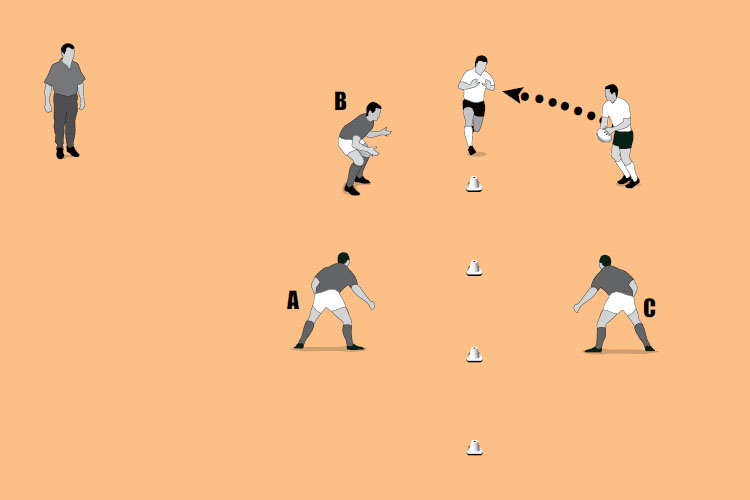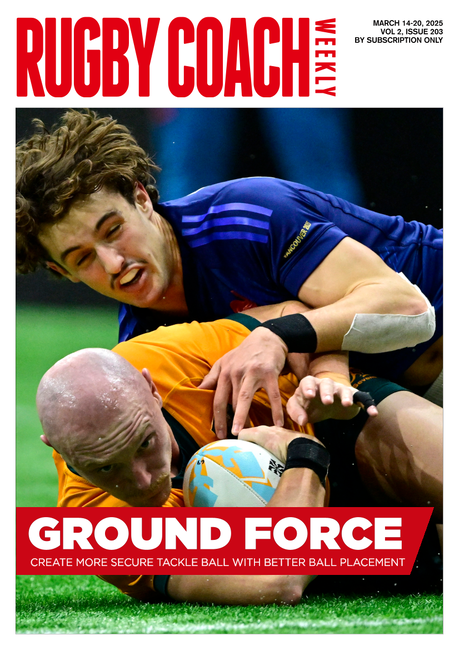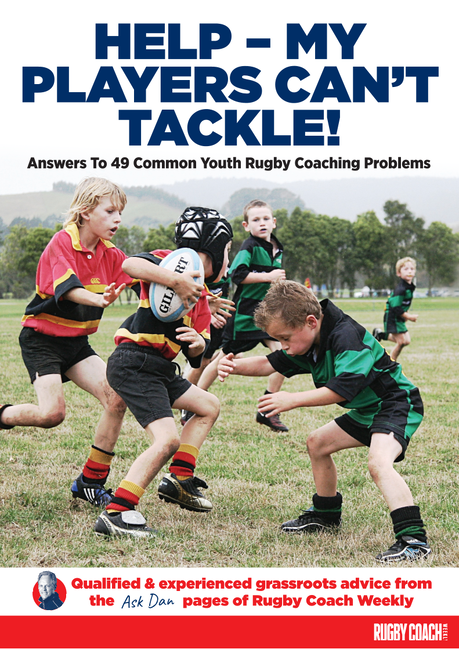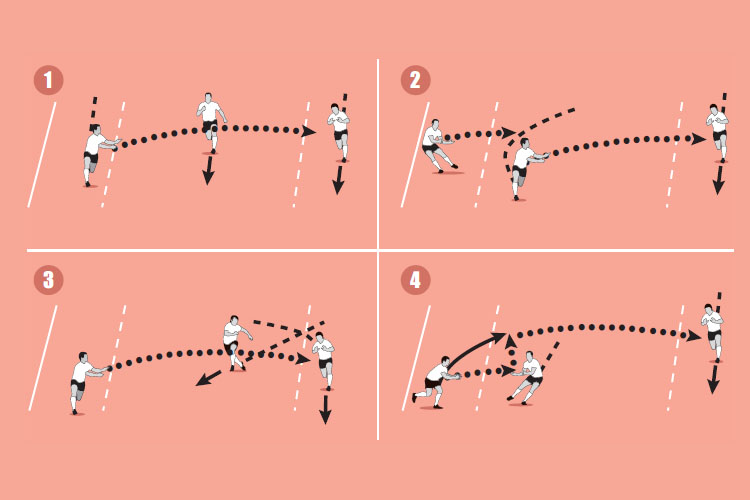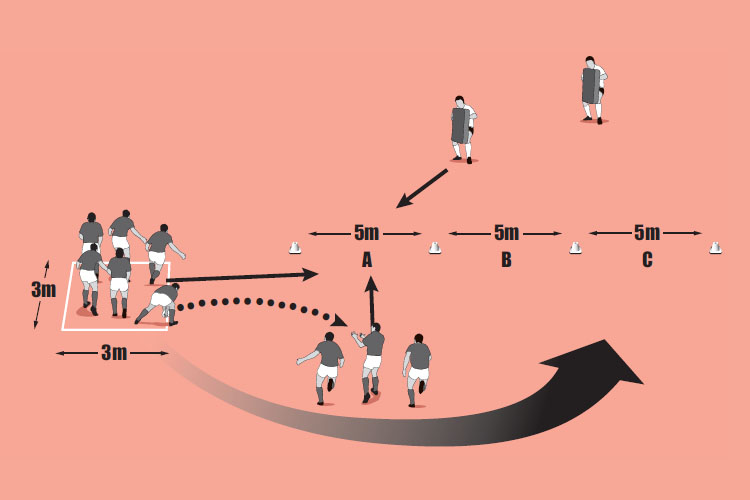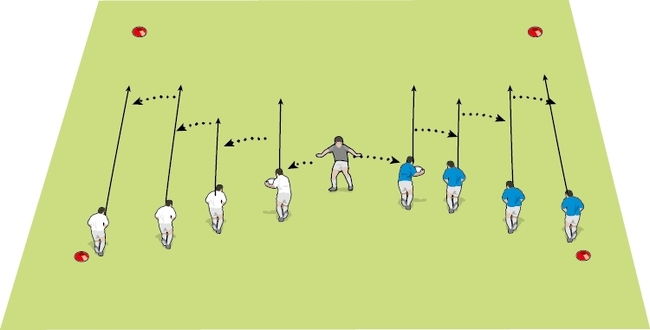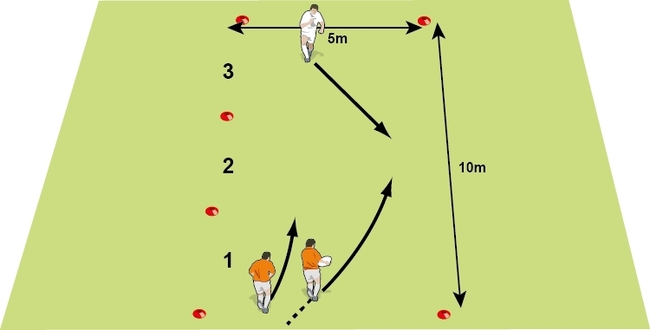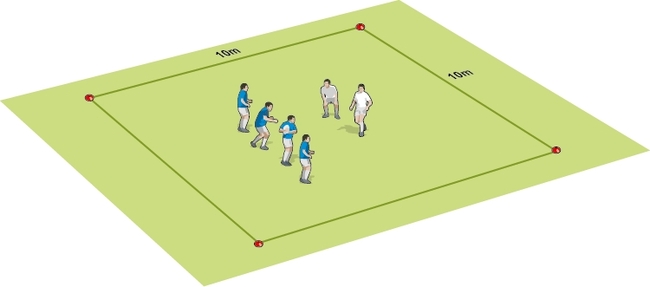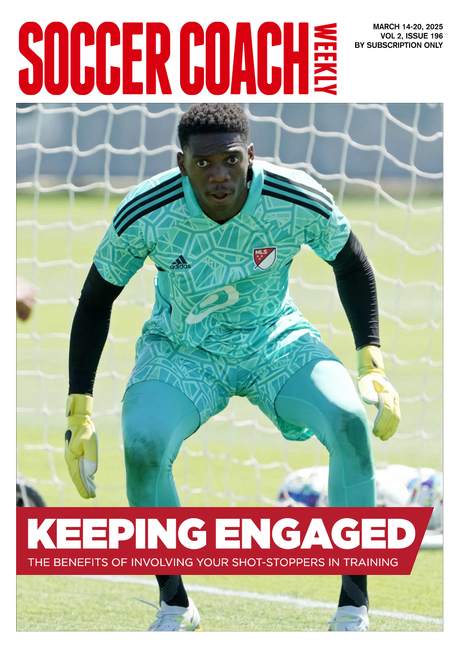Standing in the tackle
Collapsing in the tackle is a problem for an attacking team. It gives the defence more opportunity to steal or slow down the ball because it is more difficult for support players to get in behind the ball carrier. Use this session to build understanding of how to keep going forward in the tackle.
Warm up time: 5-7
Session time: 8-10
Development time: 10-15
Game time: 10-15
Warm down time: 5-8
What to think about
Staying on your feet in the tackle is about attitude. The ball carrier has to believe he can keep going and so keep his legs “pumping” in the tackle. But it is more than that – he should be twisting and fighting with his upper body to drive forward. Otherwise he becomes an easy target for a second tackler. Tactically, you can tell players that if the ball carrier is going forward, it is easier for the support players to help, and the defensive line has to move backwards.set-up
- Ball carrier: Drive forward, keeping the whole body moving, while trying to keep hips forward.
- Protect the ball by keeping it away from defenders.
- Win an extra metre for the team.
What you get your players to do
Put an attacker two to five metres from a line of four cones spaced out at 2m intervals. Put a feeder 3m to the side and three defenders set out as in picture 1 (at the sides and front). The attacker receives a pass and tries to get as far down the line of cones as possible. When he receives the ball, nominate a defender to tackle him (see picture 2). After a tackle is made, the feeder replaces the tackler, the ball carrier becomes the feeder and the tackler the new attacker.Development
Nominate two tacklers. Get the feeder to become the support player – he can take an offload or help the ball carrier make more ground. Change the angles of pass and tackler positions. (Let players come up with ideas on where to start).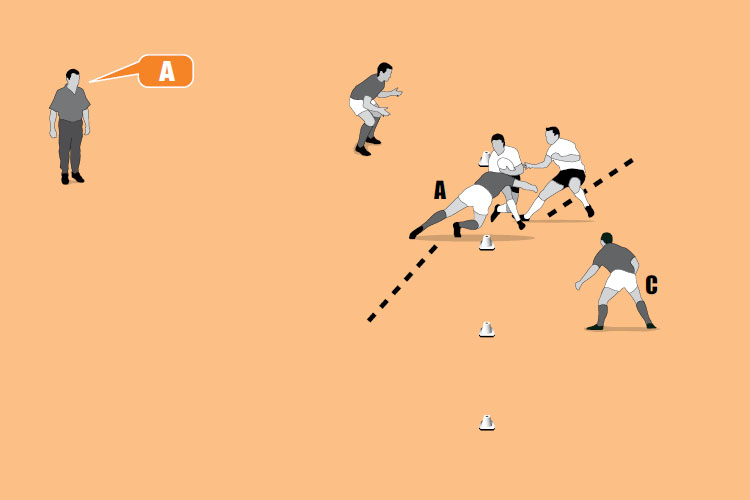
Game situation
Put four defenders along the midline of the box (see picture 3). Get four attackers to run around in their half of the box. They decide which attacker will try to break through. He runs over the midline, and the defence tries to prevent his progress. Mark down how far he goes, with a point for five metres made and the ball secured (that is available to be passed from a ruck), or a try scored (two points). As this is a one-player attack, there is no passing allowed in the defence zone and no flow of play. A tackled player earns points by either presenting secure ball or scoring a try. Once tackled, play starts once again outside the defence zone.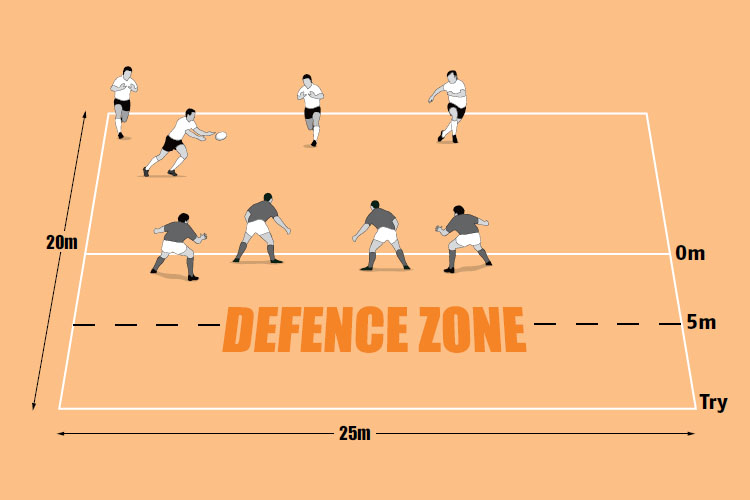
What to call out
- “Don’t twist in the tackle, stay going forward”
- “Short powerful steps in contact”
- “Don’t force an offload – be secure with your support player”
Premium Books
Newsletter Sign Up
Coaches Testimonials

Gerald Kearney, Downtown Las Vegas Soccer Club

Paul Butler, Florida, USA

Rick Shields, Springboro, USA

Tony Green, Pierrefonds Titans, Quebec, Canada
Subscribe Today
Be a more effective, more successful rugby coach
In a recent survey 89% of subscribers said Rugby Coach Weekly makes them more confident, 91% said Rugby Coach Weekly makes them a more effective coach and 93% said Rugby Coach Weekly makes them more inspired.
Get Weekly Inspiration
All the latest techniques and approaches
Rugby Coach Weekly offers proven and easy to use rugby drills, coaching sessions, practice plans, small-sided games, warm-ups, training tips and advice.
We've been at the cutting edge of rugby coaching since we launched in 2005, creating resources for the grassroots youth coach, following best practice from around the world and insights from the professional game.

